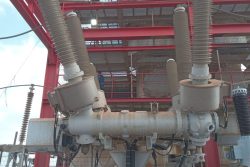As President Trump continues to spout daily self delusional rants, from the safety of the White House, of America’s successful handling of the spread of the COVID-19 virus, the sad reality is that the actual number of infected persons bears no correlation to his thinly disguised re-election campaign promotions.
Trump’s initial dismissal of the threat of the virus as a hoax and ‘fake news’ designed to block his re-election chances have come back to haunt him, as America now leads the world with 587,173 infected cases and 23, 644 deaths, as of the time of writing. Sadly, this unwarranted situation could have been avoided, had the USA tailored its response to the approaching crisis along the lines adopted by Hong Kong, Singapore and Taiwan. In spite of their proximity to the epicentre of the pandemic, Wuhan, China, these three territories have managed to keep the number of infected persons in their respective populations, relatively low when compared to the rest of the world.
The 2003 SARS (Severe Acute Respiratory Syndrome) epidemic infected over 800,000 persons around the globe and killed 774, of which 299 were from Hong Kong. It was a hard earned lesson which led to the setting up of response systems for the next crisis, which, as fate would have it, arrived at the worst possible time, the Lunar New Year, when millions of people from the three territories travel to China.
The hallmark of the trio’s response to the pending threat of the coronavirus was their aggressive response. Despite the fact that China is their biggest trading partner, the three territories imposed travel restrictions from the mainland, regardless at the time that the World Health Organisation (WHO) had deemed it unnecessary.
Although Singapore was the third country to report a case of COVID-19 infection and appeared headed for a large scale outbreak as the number quickly rose to 80, the highest outside of China, the threat did not emerge. Aggressive comprehensive testing, strict isolation and quarantine protocols, and the sparing no cost in tracking down every possible contact of those infected, has led to the relatively low numbers of infection and mortality rates in the tiny island state. With the government footing all the bills for testing and hospitalization, the population has no need to stress about the cost factor. After the experience of SARS, Taiwan had set up a central command centre for epidemics which now quickly swung into action and coordinated the government’s response to the anticipated crisis. Its extended response list of actions included resource assessment of hospitals, public communication plans, border controls, work and school policies. Airline passengers arriving from Wuhan were the subjects of health screenings, even before the WHO confirmed that the virus could be transmitted by person to person contact.
With the SARS outbreak still a harsh reminder to the older residents of Hong Kong, the implementation of wearing masks, social distancing and the practice of good hygiene, quickly returned as daily routines with the imminent threat of another epidemic. With the cancellation of mass gatherings and sequestering of the population, Hong Kong, like the other two territories, has managed to keep the number of infections to a relatively low number.
While some observers have been quick to point out that the governments of these three territories can be accused of having applied some authoritarian methods of governance in this instance, these results would not have been possible without a disciplined society which understands and appreciates the dangers posed by a pandemic of this nature and is willing to cooperate with the rules of the day for the safety and well-being of their fellow citizens.
Here in Guyana, we should be taking notes.






